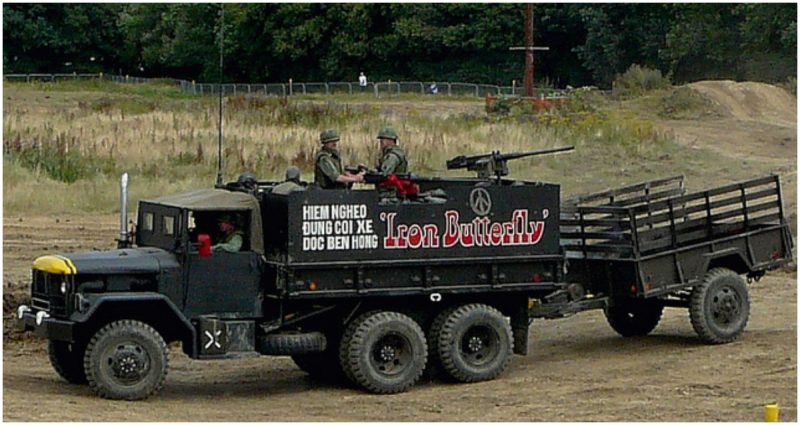Men of the transportation corps started converting 2.5-ton trucks into mobile gun platforms. They added wood and sandbags as well as mounting M60 machine guns in the back.
In 1967, the U.S. had units spread throughout the Vietnamese central highlands. From airfields to firebases there were units large and small amounting to tens of thousands of soldiers in constant need of food, ammunition, fuel, and other supplies.
Despite the efforts of helicopters and huge cargo planes like the C-130 Hercules, the U.S. military couldn’t keep up with the demand. Instead, it relied on U.S. Army Transportation Corps to convey supplies where they were needed.
The routes from the coastal ports of Qui Nhon and Cam Ranh Bay to bases inland were often long, winding roads that were badly in need of repair. Much of the journey would also be conducted outside the protection of U.S. forces.
The transport corps who were tasked with keeping these forces supplied became prime targets for Viet Cong (VC) ambushes. Looking for the weakest link and unable to penetrate large bases and formations effectively, the VC started daily raids on supplies.
During one of the first of these attacks on September 2, 1967, 30 trucks were destroyed or damaged, nine drivers were killed, and another 17 were wounded. In only ten minutes, the convoy had turned into a disaster zone.

The Army had virtually no response other than providing more armed jeeps to help provide fire support. So, the men of the transportation corps had to do what troops do best: improvise.
Arming Up
To help protect their convoys and their fellow soldiers, men of the transportation corps started converting 2.5-ton trucks into mobile gun platforms. They added wood and sandbags as well as mounting M60 machine guns in the back.
These efforts helped, but they weren’t sustainable. The added weight put too much strain on the vehicles, lowered their fuel efficiency, and often resulted in them breaking down.
Furthermore, when the sandbags got wet, this increased the weight so the trucks couldn’t keep up with the convoys. The wooden walls provided little, if any, real protection.
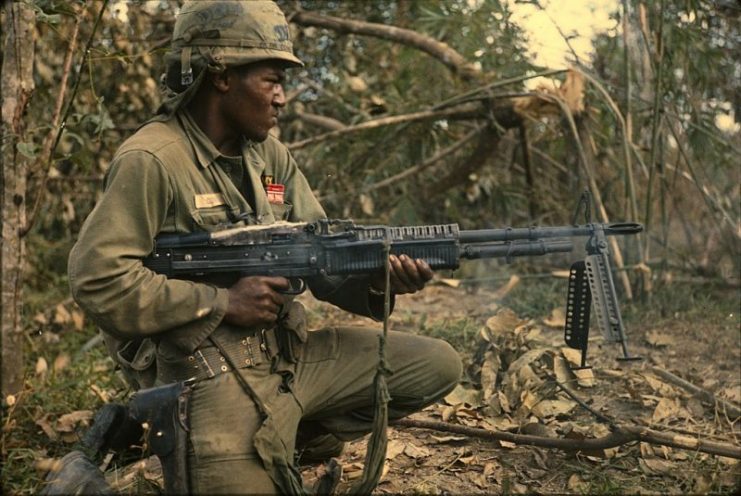
Heavy Metal
In order to adjust to the conditions, the men moved to using five-ton trucks. They started scrounging for steel plates, gun mounts, and anything they could beg, borrow, steal, or trade for what might give them protection from the VC attacks.
There was no Standard Operation Procedure, guidelines, or issuing of equipment. The soldiers just put together what they could, and consequently, the armored gun trucks were born.
Within a few months, the trucks started sporting an impressive amount of firepower to use against the enemy. Soon, the gun trucks were fitted with .50 caliber machine guns, grenade launchers, and XM 134 mini-guns.
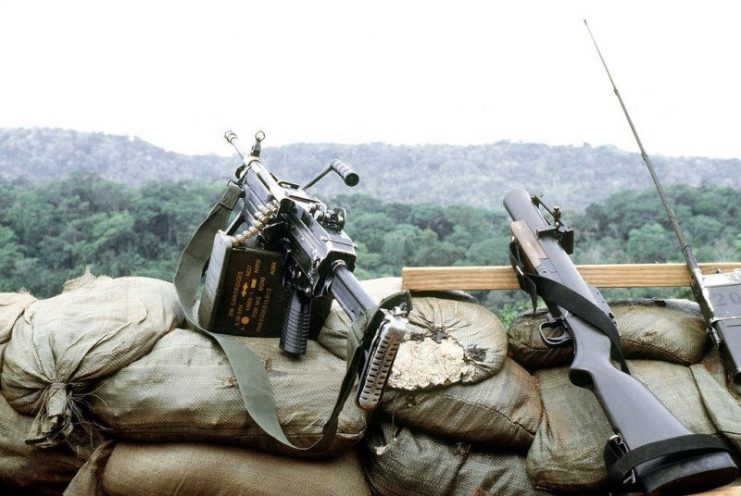
The only “authorized” armament for these transformed five-ton trucks was the M60, but the soldiers of the transport corps were very creative in how they “acquired” what they needed.
The troops painted their new vehicles all in black instead of the traditional, drab olive color. They not only added their own artistic touches, but the soldiers began naming the trucks too. Names like “Brutus,” “Satisfaction,” and “The Untouchable” were added to the sides of the vehicles.
Eventually, the need to provide their own security was answered. There would often be one gun truck for every ten transport vehicles in convoys that sometimes reached 200 vehicles.
https://youtu.be/seaN__DjZpE
Devil’s Hairpin and Ambush Alley
Unlike many rear echelon soldiers in Vietnam, the drivers of the transportation corps faced daily danger while making supply runs through hostile territory.
Highways riddled with potholes like Route 19 between Qui Nhon and Pleiku were given names like “Ambush Alley” and “Devil’s Hairpin.” As the tactics and weapons of the Viet Cong improved, engagement areas with the convoys increased in size.
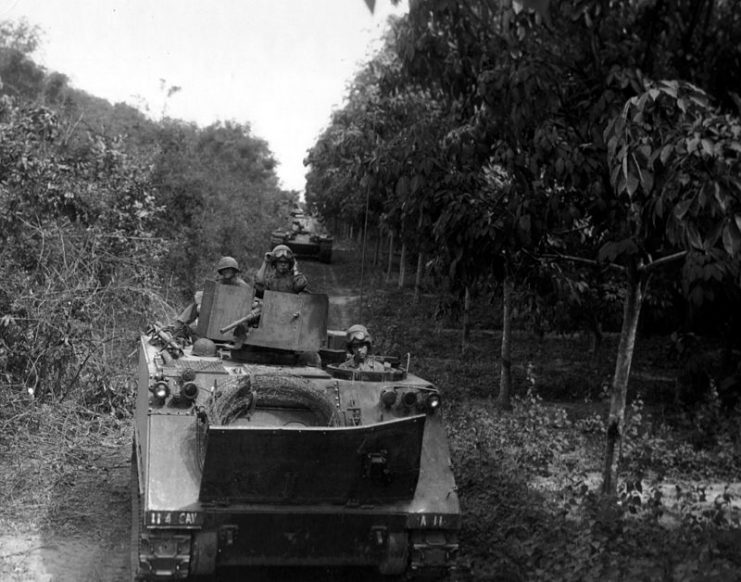
When attacked, most of the soldiers would bail out of their vehicles and seek cover. But the drivers of the gun trucks would steer their vehicles into the kill zone and take on the VC. In one engagement, the men in the gun trucks were credited with killing over 40 members of the VC.
The transport corps received numerous Purple Hearts as well as awards for heroism and commitment to duty. The men of the transport corps were as tight a unit as those serving on the front lines.
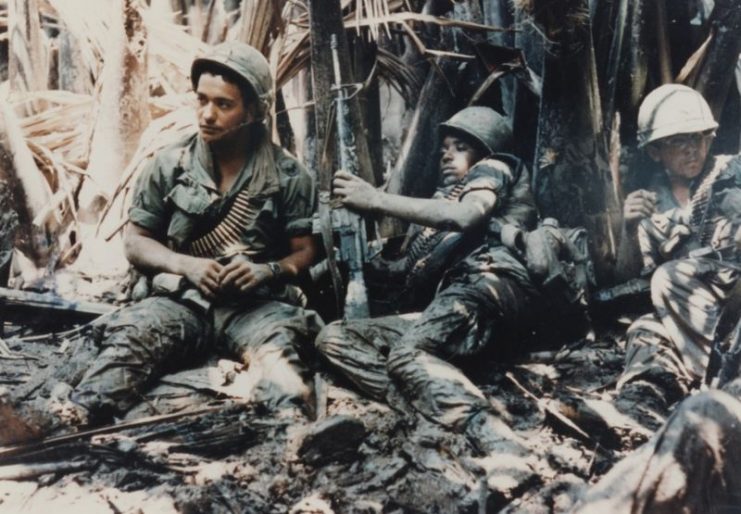
Specialist Larry Dahl of the 359th Transport Company was one of the brave gun truck crews fighting off an ambush on Route 19 when he saw a Viet Cong guerilla throw a grenade into the back of the truck. He immediately jumped on it to save his fellow soldiers who were furiously firing on the enemy.
In another action, Specialist Dallas Mullins of the 444th Transportation Company jumped from the cover of his gun truck when his driver was wounded and the truck stopped. Despite being wounded himself, he applied aid to his driver and moved the truck out of the kill zone.
Dahl was posthumously awarded the Medal of Honor for his selfless act to save his friends. Mullins was awarded the Silver Star for his bravery. The 8th Transport Group as a whole received a Presidential Unit Citation.
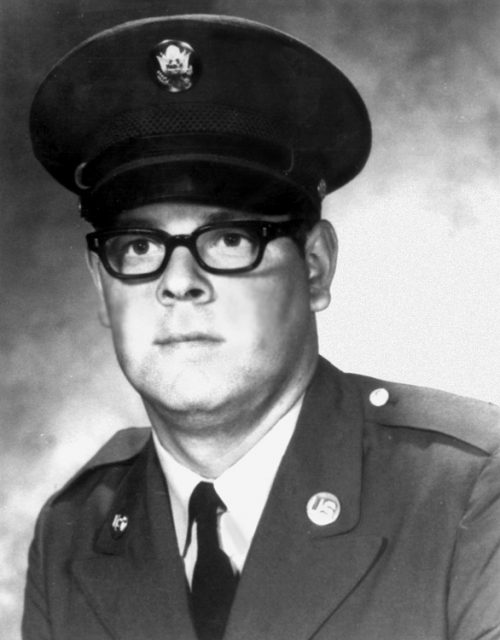
Different Breed
The “men who served the men who served” were a tough lot with indomitable spirit. They were unbreakable, running the gauntlet day in and day out. The colorful names and the personalized touch on each of the gun trucks provided a small insight into their attitudes and pride.
Read another story from us: Air Cavalry Tactics in Vietnam
Even today, one can find the men of the transportation corps displaying their camaraderie, sharing stories, and maintaining contacts. Although only one original gun truck exists in the U.S., there are a plethora of photos, videos, FaceBook pages and even some historical documentaries on these heroes.
